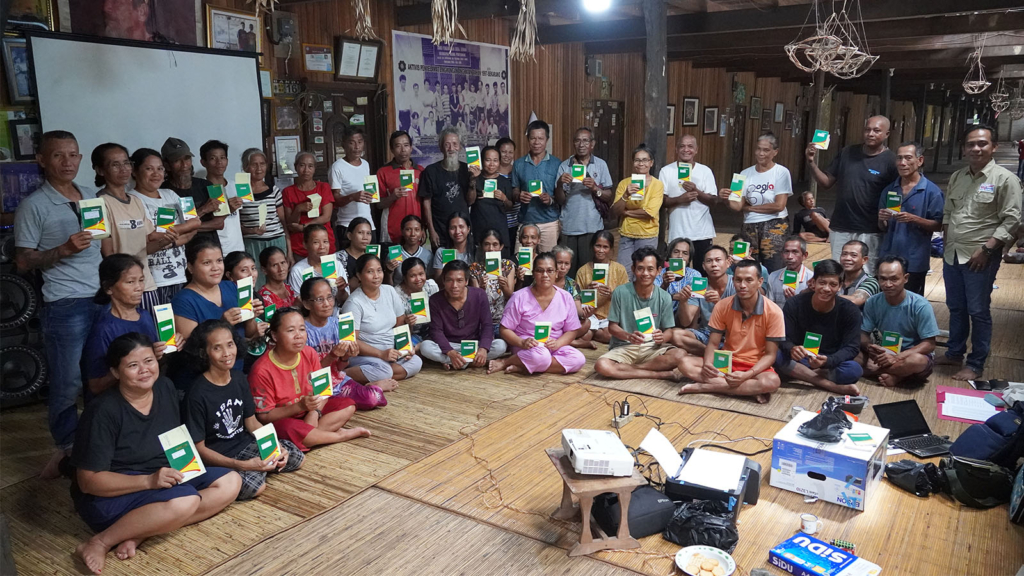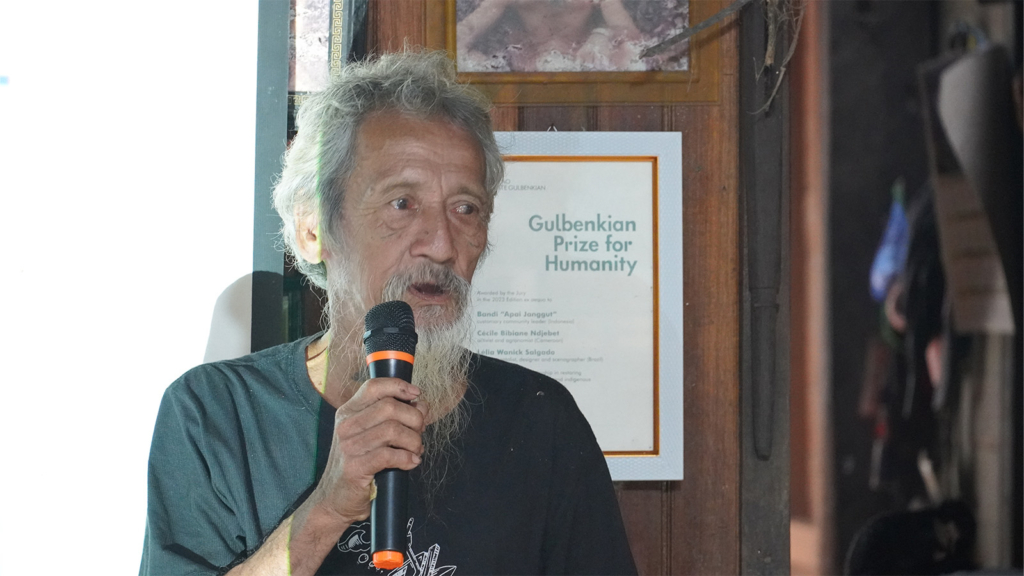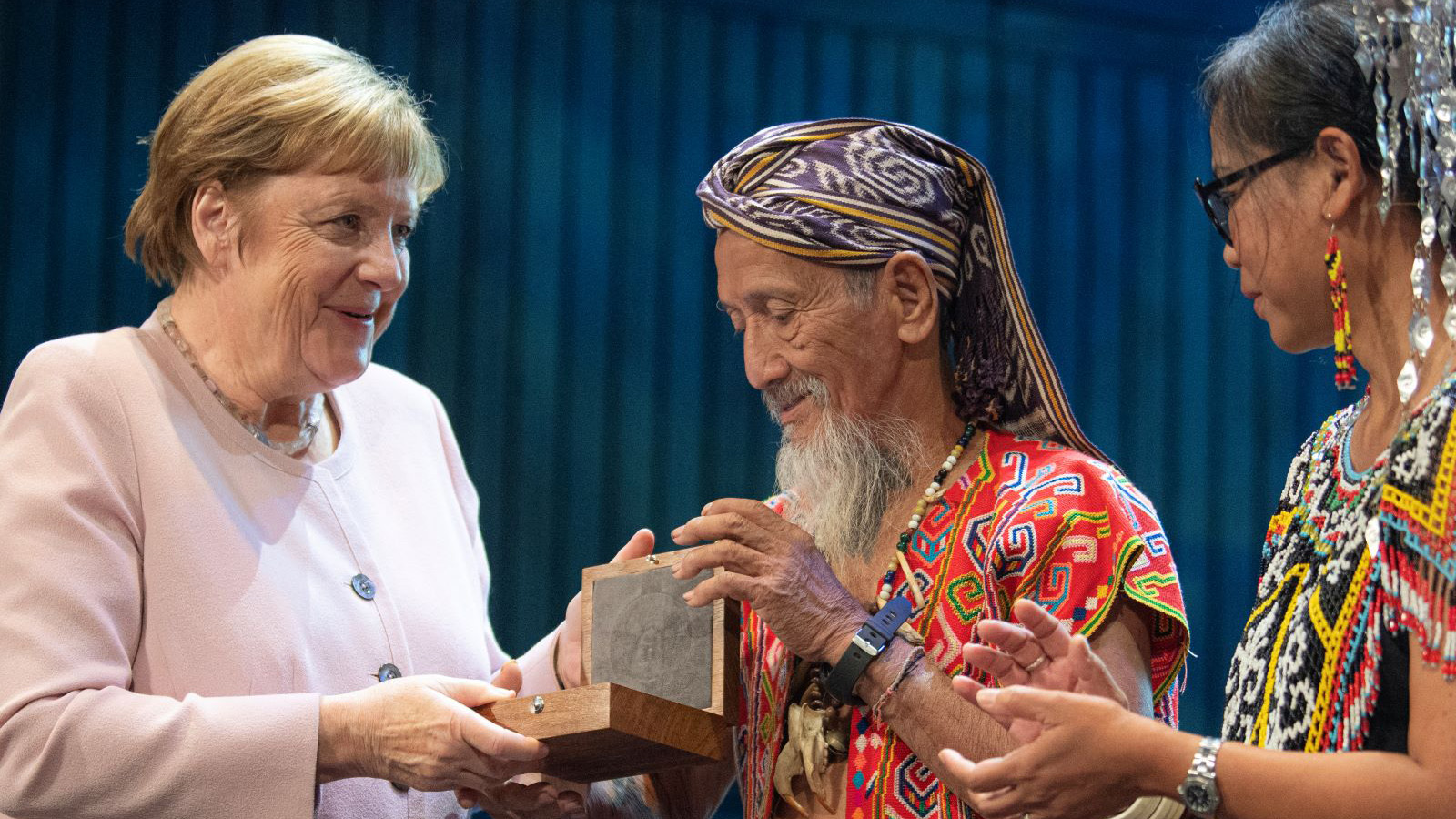Climate Funding for Indigenous Communities
Gulbenkian Prize for Humanity winner representative Yani Saloh reflects on the importance of direct funding for Indigenous Peoples and local communities
At COP28, the Global Alliance of Territorial Communities (GATC) released a critical report, pointing out flaws in global efforts to fund Indigenous/Local Communities conserving biodiversity tropical forests in Africa, Asia, and Latin America. Despite protecting 80% of global biodiversity, only 7% of funding allocated by the COP process went to Indigenous communities.
Amongst much agreement in Dubai, one of the few things that everyone can agree upon is that working with Indigenous People and Local Communities (IPLC) is a crucial aspect of solving the climate crisis. IPLCs hold traditional knowledge and sustain practices that allow them to live in harmony with their environments.
But how best to channel this money to IPLCs remains a sticking point – directly, or through intermediaries such as Governments or NGOs? Evidence shows that funds often dissipate before reaching the communities that need them the most.
The report Indigenous Peoples and Local Communities Forest Tenure Pledge from the Forest Tenure Funders Group (FTFG) highlighted that outdated funding systems, often mediated by third parties, result in only a small fraction of the funds reaching IPLCs. “You would have to ask these intermediaries where all the money is going, and what it is being invested in. We would like to know that as well,” said Levi Sucre Romero, Indigenous Bribri Costa Rican leader who serves on the GATC council, at COP28.
Some parties doubt whether Indigenous Peoples have the capacity to manage the funds. They hold the assumption that IPLCs lack capacity to manage money and report on spending, are subject to corruption and capture by local elites, and that the money won’t be spent on ‘the right things’. Therefore, an intermediary is needed to act like a parent regulating the release and use of such funds. And intermediaries charge fees.
Others advocate a ‘Direct Transfer’ model. Give IPLCs the funds they need and respect their right and ability to manage and spend it as they wish. Would you like your boss to tell you how to spend your salary, and look over your shoulder as you do so?
From my experience working in this field, I can see the merits and the weaknesses of both of these positions.
But first of all, let’s recognize and celebrate the good news; IPLCs are massively more recognized and respected than they were when I started my career 25 years ago. The question now is not if we should fund them but how. That’s progress. And it is thanks to the tireless campaigning by multiple NGOs and Civil Society Organizations around the globe.
Indeed, IPLC governance systems can be un-transparent, unrepresentative, open to capture by local elites and subject to leakage. The same can be said of NGOs and Governments.
So rather than thinking in black and white, let’s recognize what each party is good at, and work together to help them play to their strengths.
In July this year, the Calouste Gulbenkian Foundation, a philanthropic organisation headquartered in Lisbon, Portugal, awarded its annual Gulbenkian Prize for Humanity to three individuals who have championed ecosystem restoration efforts in the Global South. The 1 million Euros prize fund was split between individuals and will support communities facing some of the worst impacts of climate change to protect natural assets and ecosystems that support their local livelihoods and the global climate system. Since the Prize was launched in 2020, the Jury has recognized different approaches to climate action including youth mobilization, coalition building, developing localized solutions, and scientific research. The Prize tells a story of possibility – showing us that there is still hope and, if we act now, we can build a better and more sustainable future. This year’s prize recognized the critical role of indigenous people and local communities, as well as the need for nature-based solutions to sustainably tackle climate change.
Bandi, the leader of the Dayak Iban Sungai Utik community in West Kalimantan, Indonesia, was one of the recipients who was recognized for his exemplary leadership. Born about 90 years ago, Bandi has witnessed the massive deforestation of Borneo. He remembers the Japanese occupation, Independence from the Dutch, and the era of uncontrolled commercial logging. For over half a century, his community has persistently protected their forest, facing challenges from illegal logging and industrial agriculture. We should thank people like Bandi and the community – because of their actions on the ground, our life-giving ecosystem is protected.
The Gulbenkian Prize funding is going directly towards supporting Bandi’s community to sustain their livelihood and help them continue to protect the 9,500 hectares of land in Borneo under their custom. This is the first time the community has received a financial reward for conserving their forest. The promise that ‘you can get paid for conserving your forest’ has been repeated over and over, but there has been no payment yet. Frustration is rising. The Gulbenkian funding has provided a deserved cash award representing 25% of the total prize, given directly to each of the 90 households (287 people). This helping to build trust and buy time, in a way that has never happened before.
It’s important to understand today’s reality. Rural communities are no longer isolated communities, and generally they don’t want to be. When we ask what’s important in the Dayak Iban Sungai Utik community, we get a variety of answers. For Bandi, it’s all about the forest. The younger generation is concerned about education, WiFi signal, mobile phones, laptops, motorbikes and jobs with a cash income. Mothers prioritize a good harvest, food, education, and healthcare. Meanwhile, parents are seeking for a stable income and a way to make a living.
To manage these diverse priorities and help make decisions, as well as to avoid some of the (perceived) problems mentioned above, the Dayak Iban community has now established a Steering Committee (SC). I play the role of Community Learning Partner (CLP), advising, empowering and strengthening this community institution as executing body to receive, allocate and manage the funds, with operational guidance that agreed by both Gulbenkian and the community SC. The activities are designed to improve the community’s quality of life and capacity to address challenges, and build resilience to climate change, aligning with the Calouste Gulbenkian Foundation’s guideline and focus on solutions, collaborative efforts, and initiatives that benefit nature as well as humanity.


The Steering Committee has set priorities to improve quality of education, healthcare, income from good agricultural practices, eco-tourism, animal husbandry and tourism/homestay. They appreciate the unrestricted cash upfront to support their basic needs, as well as the chance to select their own priorities and the support to implement them. The process is subject to audit and oversight by regular monitoring and there is a grievance mechanism built in. As CLP, I constantly draw upon my long-term connections, relationships and personal trust. Understanding the community’s internal dynamics, respecting cultural behavior and having the patience to align activities with their needs will all contribute to the success of such initiatives.
This is a mutual learning process, and our hope is that this case study can serve as a model for direct funding to other community-led initiatives, addressing short and long-term challenges while respecting community needs and culture.
To effectively address the climate emergency, efforts should extend beyond solely reducing greenhouse gas emissions, to include sustainable development, biodiversity protection, and improving the rights, capacity, and livelihoods of marginalized IPLC communities.
The Calouste Gulbenkian Foundation’s model serves as an inspiration for other community groups and governments worldwide to place faith in community-led approaches.
This guest article by Yani Saloh, Friend of Sungai Utik (Community Learning Partner), was originally published on Mongabay.

